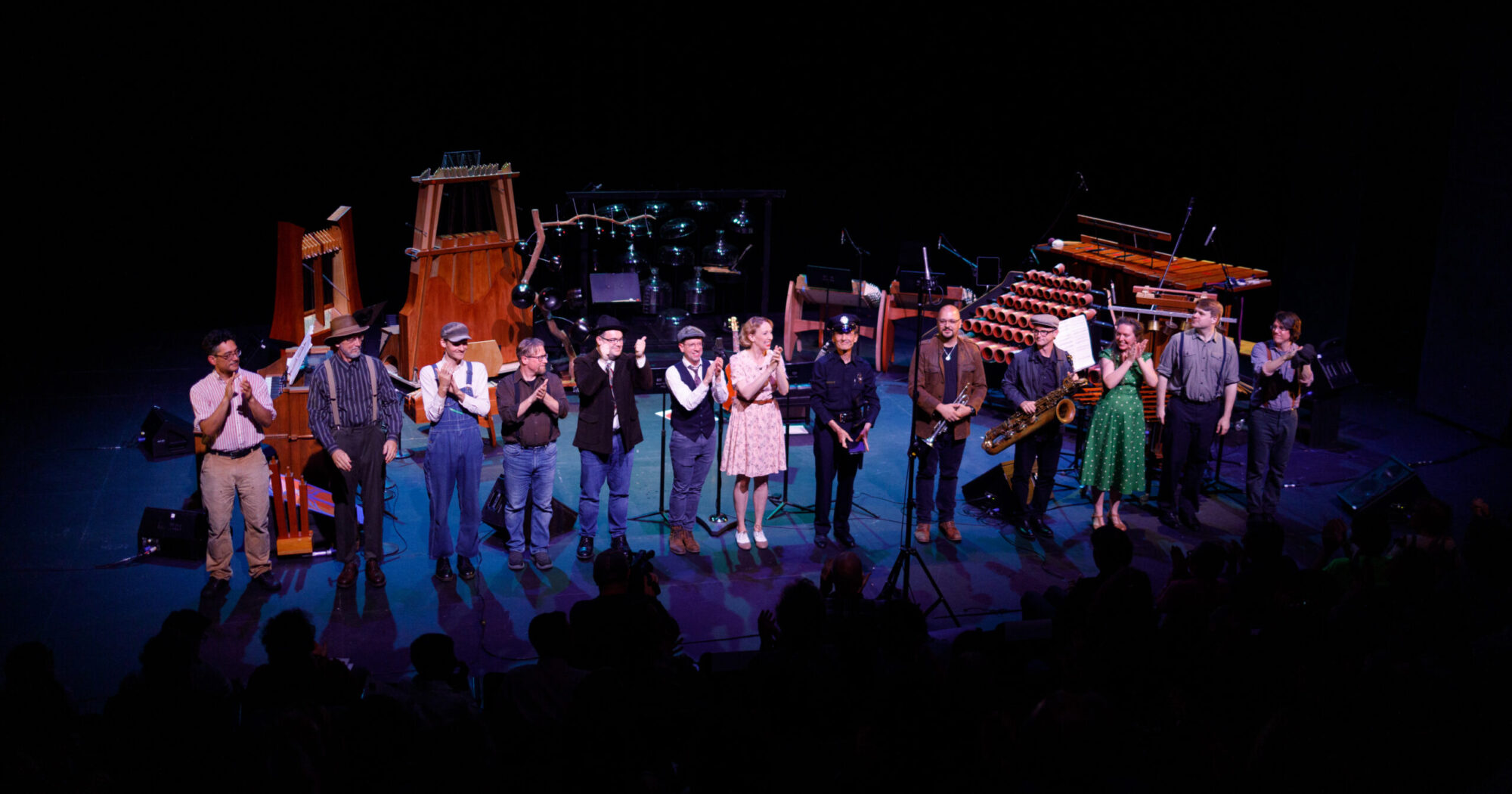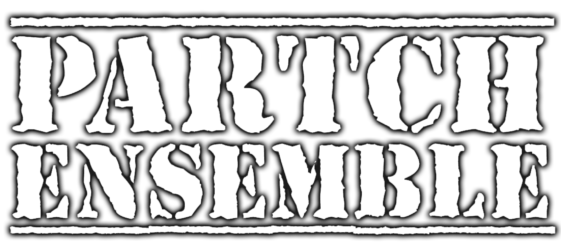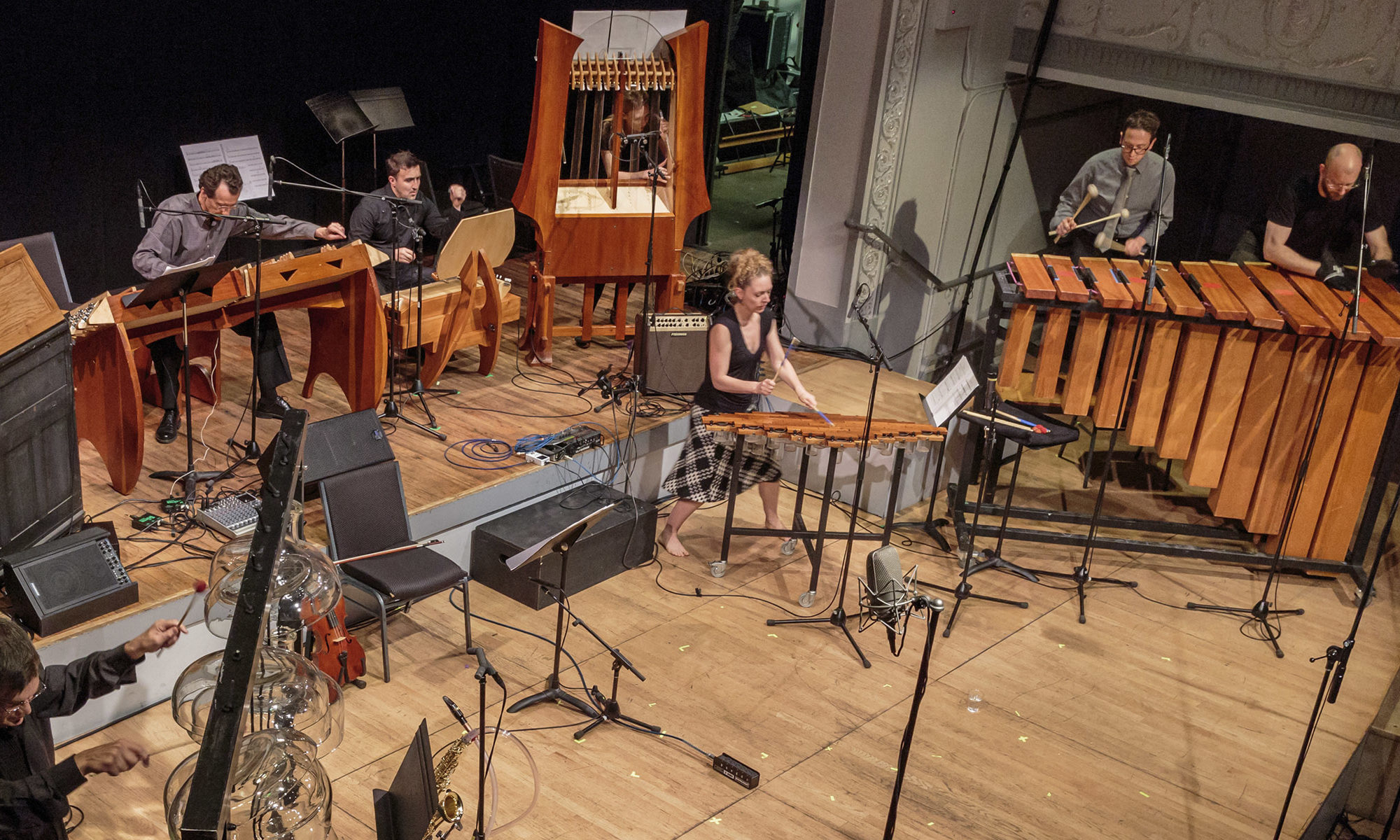re-Genesis of a Music
~ A tale of obsession ~
by John Schneider
Organ Transplant, pt.1
Once Harry Partch had decided on a working scale of 43 ‘true tones’ to the octave, as he called them, he faced the incredible challenge of how to produce them, let alone how to write them down. He first experimented with bowed string instruments by making special paper coverings for their fingerboards, and eventually created his first so-called microtonal instrument by adapting a viola, adding a cello fingerboard onto an extended neck. He first called it a Monophone, “Monophony” being the name that he gave his particular language of just intonation, though soon it was simply called the Adapted Viola. Of course in the traditional world of music, the term monophonic refers to a single line of pitches, and while Partch was initially fascinated in instrumentally reproducing the subtleties of pitch variation found in human speech, he was equally concerned with harmony, and thrilled to the new harmonies revealed by his discovery of just intonation.
Partch’s first attempts at building a harmonic instrument were his Adapted Guitar (1935), followed soon after by the creation of a modern harmonic version of the ancient Greek Kithara (1938). But long before that, Partch dreamed of a keyboard instrument that could reproduce the pure intervals of ratio tuning. He was, after all, an accomplished pianist, and had moved to Los Angeles from Arizona to study with the renowned pianist Richard Buhlig while he attended the University of Southern California. He only lasted at USC for three months, but continued his education via public libraries where he discovered Helmholtz’s On The Sensations of Tone. It was there that he learned about the acoustic inferiority of tempered tuning, as well as the tuning of the ancient Greek modes, scientific measurement intervals with ratios, charts with several different sizes for each of our familiar intervals, measuring units of 1/100th of a semitone (= 1¢) rather than the standard equal-tempered semitone, and most importantly, the concept of Just Intonation.
In fact, Helmholtz had created a harmonium tuned to Just Intonation since, “The harmonium, on account of its uniformly sustained sound, the piercing character of its quality of tone, and its tolerably distinct combinational tones, is particularly sensitive to inaccuracies of intonation.” (Sensations of Tone, p. 316) He chose a two manual instrument with a set of vibrating reeds for each, and tuned them such that the true values for flats were on the upper keyboard, and the sharps on the lower.

Harmonium Reeds pictured in Sensations of Tone
Partch would spend many hours tuning reeds in the coming decades for his numerous keyboards, but he also learned from Appendix of Sensations written by the English translator Alexander Ellis, of even more complex instruments created during the same era that used experimental “generalized” keyboards to handle all of those so-called extra notes:

Mr. Poole’s Enharmonic Organ (1850)

Bosanquet’s Generalized Keyboard (1875)
It comes as no surprise, then, that when Partch designed his first RATIO KEYBOARD in 1932, it also used a very unusual pattern…

Partch’s Ratio Keyboard design (1932)
…and also began his practice of color-coding the numerators & denominators of his ratios.
Partch was so convinced of the efficacy of this design that he constructed a model out of enameled thread spools—the ends filled with plastic wood and varnished corrugated board—and took it to the California Institute of Technology (Caltech), hoping to generate enough interest for them to construct the actual instrument:

A Partch demonstration (circa 1933)
Interested they were not, and it would take another few years and a visit to London to find out if his design would actually work.


